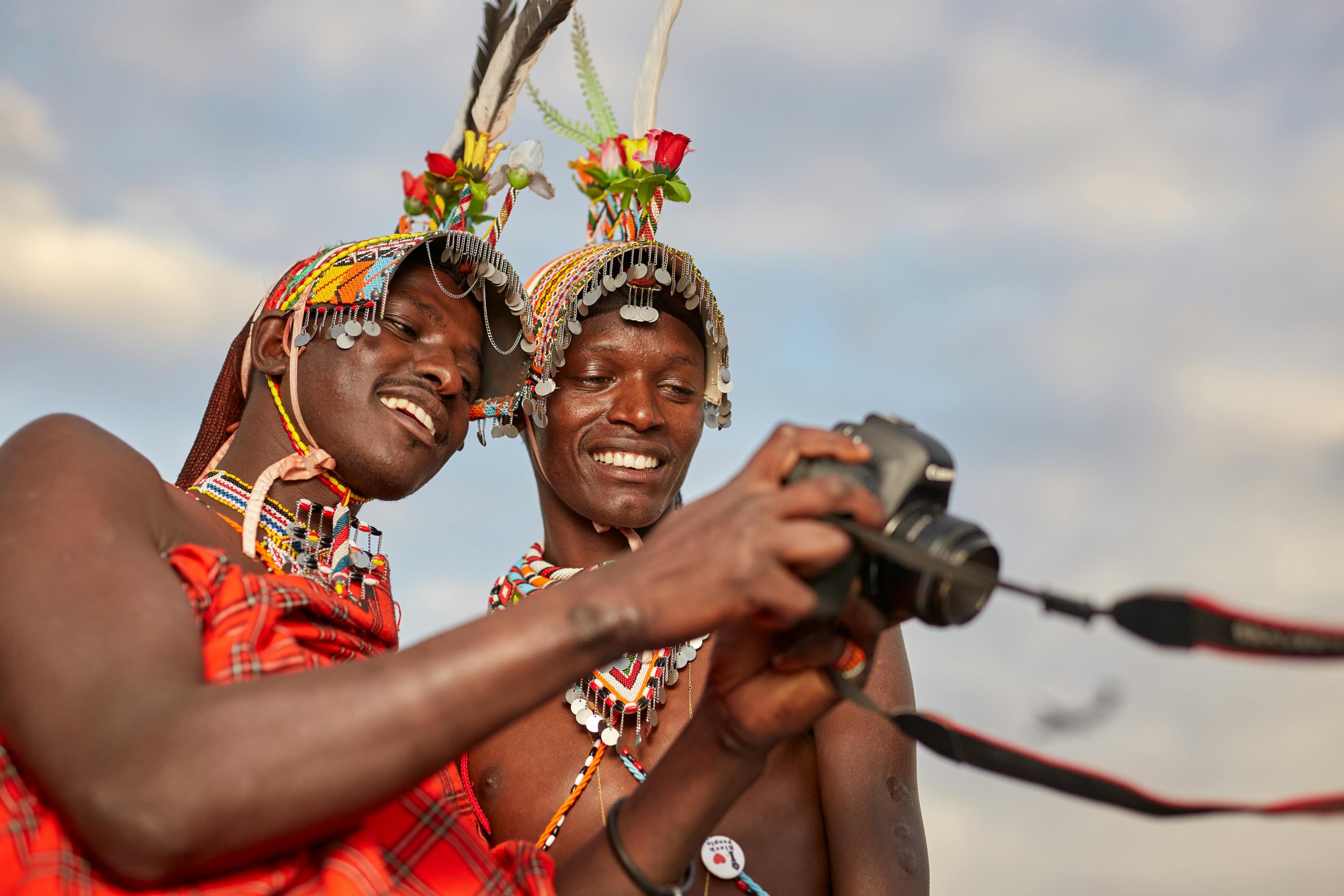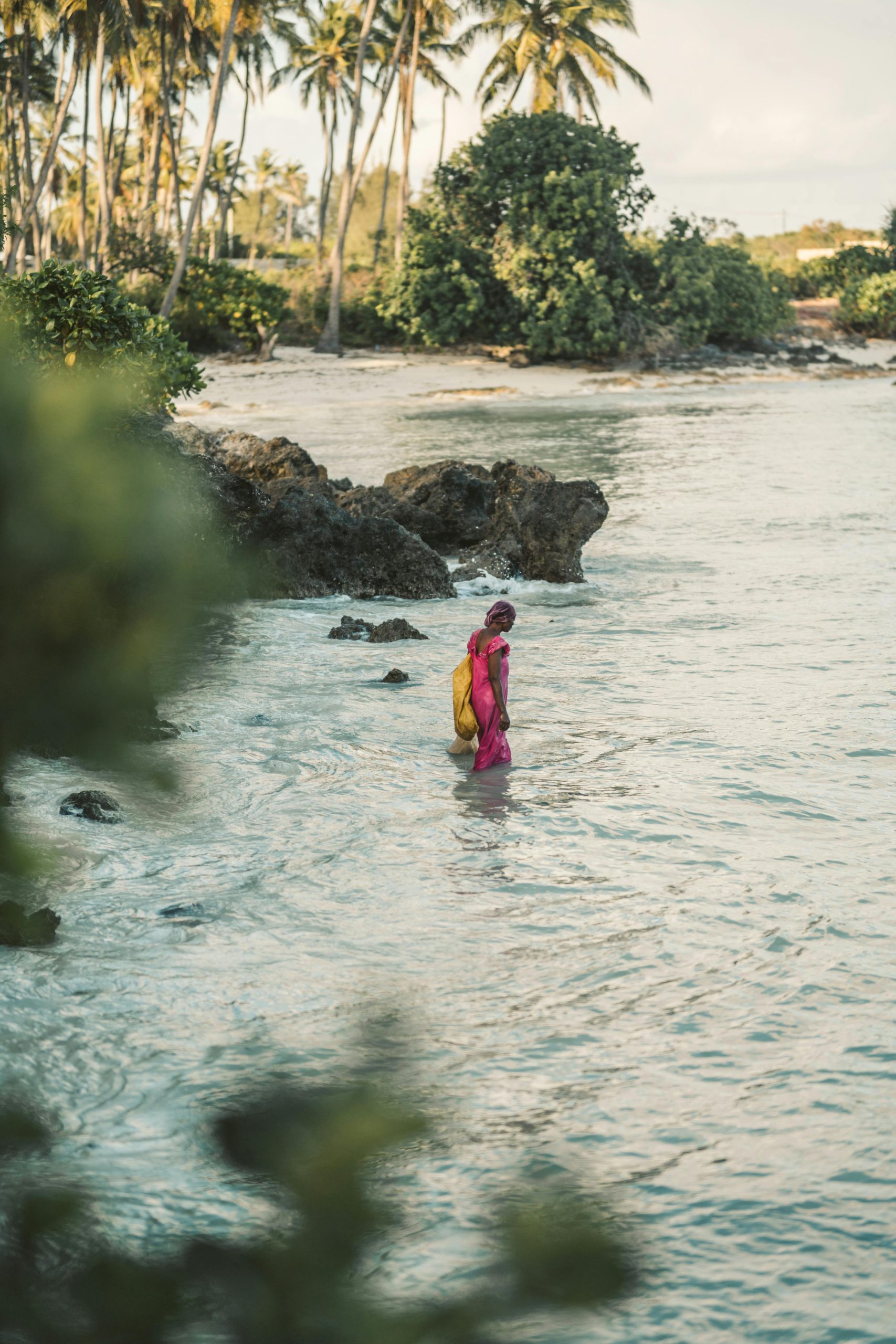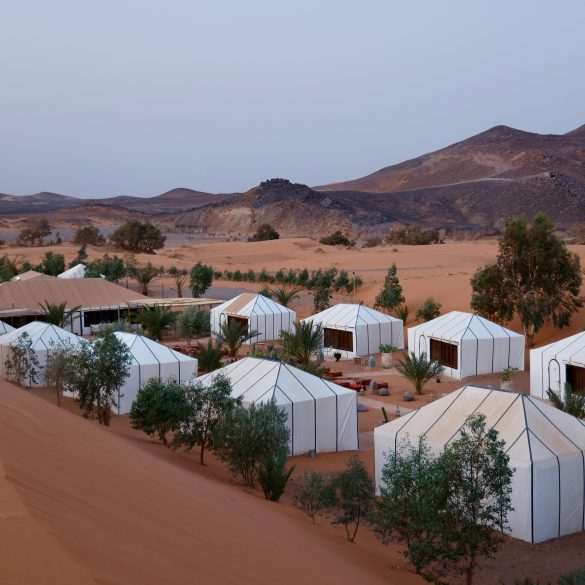A Guide to Safari in Maasai Mara: Costs, Seasons, and Tips
Picture this: you’re sitting in an open-air vehicle at 6 AM, coffee steam rising from your metal cup, when suddenly a lioness emerges from the golden grassland just thirty feet away. Her cubs trail behind, playfully tumbling over each other as morning light transforms the Maasai Mara into something that feels almost too magnificent to be real. I still get goosebumps thinking about my first encounter like this—and honestly, every safari since has delivered moments that make you question whether you’re actually awake or dreaming.
The Maasai Mara isn’t just another wildlife destination; it’s the crown jewel of African safari experiences, where the Great Migration creates one of Earth’s most spectacular natural phenomena. But here’s what I’ve learned after years of planning trips to this incredible ecosystem: the difference between a good safari and an absolutely life-changing one comes down to understanding the intricate details of timing, budgeting, and preparation.
What strikes me most about the Maasai Mara—and something that caught me completely off guard during my first visit—is how this 1,510-square-kilometer reserve manages to feel both incredibly vast and intimately personal at the same time. According to recent data from the Kenya Wildlife Service, the Mara hosts over 95 species of mammals and 570 recorded bird species, making it one of the most biodiverse ecosystems on the continent. But those numbers don’t capture the emotional impact of watching a cheetah sprint across the plains or witnessing thousands of wildebeest crossing the Mara River.
“The Maasai Mara represents the heart of what safari dreams are made of—it’s where wildlife photography becomes art, where conservation meets adventure, and where every sunrise brings the possibility of witnessing something you’ve never seen before.” — Dr. Sarah Mitchell, Wildlife Conservation International
I’ll be honest with you—planning a Maasai Mara safari can feel overwhelming at first. There’s so much conflicting information out there about costs, timing, and what you actually need versus what tour operators try to sell you. Some websites quote safari prices that seem too good to be true (spoiler alert: they usually are), while others present luxury options that might make your mortgage payment look reasonable. The truth, as I’ve discovered through extensive research and multiple visits, lies somewhere in between these extremes.
What I’m sharing here isn’t just another generic safari guide rehashing the same basic information you’ll find everywhere else. This comes from real experience—from the mistakes I made on my first safari (like packing entirely the wrong clothes for the weather), to the incredible discoveries that happened when I finally learned to slow down and really observe the intricate ecosystem dynamics playing out around me. I’ve seen the Mara during peak migration season when the plains teem with hundreds of thousands of animals, and I’ve experienced the quieter months when you can spend an entire morning watching a single pride of lions without another vehicle in sight.
Safari Costs and Budget Breakdown
Let’s talk numbers—because honestly, this is probably what you’re most curious about, and it’s definitely where I had the biggest surprises when I first started planning. The cost of a Maasai Mara safari varies dramatically based on your choices, but I’ve found that most people underestimate both the budget options and the hidden costs that can sneak up on you.
Budget Safari Reality Check
A genuine budget safari isn’t just about finding the cheapest option—it’s about understanding what you’re actually getting for your money. I learned this the hard way when I booked what seemed like an amazing deal only to discover our “luxury tented camp” was basically glorified camping with questionable plumbing.
| Safari Category | Daily Cost Range | Accommodation Type | What’s Included |
|---|---|---|---|
| Budget Safari | $150-250 per person | Basic tented camps | Meals, game drives, transport |
| Mid-Range Safari | $300-500 per person | Comfort lodges/camps | All meals, activities, premium vehicles |
| Luxury Safari | $600-1,200 per person | High-end lodges | All-inclusive with premium services |
| Ultra-Luxury Safari | $1,500-3,000+ per person | Exclusive conservancies | Private guides, helicopters, premium everything |
Here’s something I wish someone had told me before my first safari: the park fees aren’t always included in quoted prices, and they’re not insignificant. The Kenya Wildlife Service charges $80 per adult per day for non-residents, plus additional conservancy fees if you’re staying in private areas like the Ol Kinyei or Naboisho conservancies. These fees can add $100-200 per day to your total cost, depending on where you choose to stay.
Hidden Costs That Add Up Quickly
- Visa fees ($51 for most nationalities, though some can get e-visas for less)
- Yellow fever vaccination requirements and recommended travel vaccines
- Travel insurance specifically covering safari activities
- Tips for guides, drivers, and camp staff (budget $20-30 per day)
- Drinks at camps (unless you’re at an all-inclusive lodge)
- Laundry services (surprisingly expensive at remote camps)
What really surprised me was learning about the impact of seasonality on pricing. During the Great Migration peak season (July-October), prices can literally double compared to the green season. But here’s the thing I’ve discovered: the shoulder seasons often provide incredible value without sacrificing the wildlife experience. April and May, for instance, offer dramatically lower prices while still providing excellent game viewing opportunities.
“The biggest mistake I see travelers make is focusing solely on the lowest price point without considering the total experience value. A slightly more expensive safari with better guides and vehicles often delivers exponentially more memorable moments.” — James Kariuki, Safari Guide with 15 years Maasai Mara experience
I’ve also learned that booking timing significantly affects your costs. According to recent industry data from the Kenya Association of Tour Operators, booking 6-8 months in advance can save you 15-25% compared to last-minute bookings, especially during peak season. However, if you’re flexible with dates and can travel during the shoulder seasons, last-minute deals can sometimes offer exceptional value.

Best Times to Visit Maasai Mara
Timing your Maasai Mara visit is probably the most crucial decision you’ll make, and honestly, it’s where I see the biggest misconceptions among first-time safari-goers. Everyone talks about the Great Migration like it’s the only reason to visit, but I’ve had some of my most incredible wildlife encounters during the so-called “off-season” months.
Kenya Climate Context
Kenya sits on the equator, but the Maasai Mara’s elevation of 1,500-2,170 meters creates a surprisingly temperate climate. The region experiences two distinct seasons: the dry season (June-October) and the wet season (November-May), with average temperatures ranging from 12°C (54°F) at night to 30°C (86°F) during the day year-round.
The Great Migration Timeline
Let me break down what actually happens during the migration, because the timing is way more complex than most people realize. The wildebeest don’t just show up in July and leave in October—it’s a continuous cycle that offers different experiences throughout the year.
| Month | Migration Status | Weather | Crowd Level |
|---|---|---|---|
| January-March | Calving season in Serengeti | Dry and warm | Low |
| April-June | Moving north through Serengeti | Long rains | Very low |
| July-August | River crossings peak | Dry and cool | Very high |
| September-October | Mara plains grazing | Dry and warming | High |
| November-December | Moving south | Short rains | Moderate |
Here’s what I’ve learned about the famous river crossings: they’re absolutely spectacular when they happen, but they’re also completely unpredictable. I’ve sat by the Mara River for hours waiting for herds to cross, only to have them turn around and graze peacefully for another day. The wildebeest don’t follow human schedules, and that’s actually part of what makes the experience so authentic and thrilling.
My Favorite “Secret” Season
Can I let you in on something? Some of my most incredible Maasai Mara experiences happened during the green season (April-May). Yes, there are afternoon rains, but they’re usually brief and dramatic, clearing to reveal the most stunning landscapes you can imagine. The grass is lush and green, there are baby animals everywhere, and you’ll have the place practically to yourself.
Green Season Advantages
During the rainy season, the Mara transforms into a photographer’s paradise. The dramatic cloud formations, vibrant landscapes, and incredible bird life create opportunities for unique shots that most visitors never see. Plus, accommodation rates drop by 30-50%.
The bird watching during green season is absolutely phenomenal—I’m talking about over 400 species, including seasonal migrants that you won’t see during the dry months. According to the East Africa Natural History Society, this period offers the best opportunities for spotting rare species like the Eurasian roller and various bee-eater species.
- Peak Season (July-October): Best for migration, highest costs, most crowded
- Shoulder Season (January-March, November): Great wildlife, moderate prices, fewer crowds
- Green Season (April-June): Lush landscapes, lowest prices, excellent for photography
What about the weather? I always tell people to prepare for temperature swings that can be pretty dramatic. Morning game drives might start at 12°C (54°F), requiring warm layers, while midday temperatures can reach 30°C (86°F). The altitude means evenings cool down quickly, and I’ve actually been cold at night even during supposedly warm months.
“The Maasai Mara offers exceptional wildlife viewing year-round, but each season provides a different emotional experience. The key is matching your expectations with the natural rhythms of the ecosystem.” — Dr. Margaret Kinnaird, Wildlife Conservation Society
Essential Planning Tips and Cultural Experiences
After multiple visits to the Maasai Mara, I’ve developed some pretty strong opinions about what makes or breaks a safari experience. The difference between a good trip and an absolutely transformative one often comes down to details that most first-time visitors don’t even consider.
Choosing Your Safari Style
Here’s something I learned the hard way: not all safari vehicles are created equal. My first safari involved a converted minibus with windows that barely opened, making photography nearly impossible and game viewing frustrating. Now I always insist on proper safari vehicles with pop-up roofs and guaranteed window seats for everyone.
- Private vs. group safaris: Private offers flexibility but costs 40-60% more
- Vehicle type: Insist on 4WD with pop-up roof for optimal viewing
- Group size: Maximum 6 people per vehicle for comfortable viewing
- Guide experience: Request guides with naturalist training, not just driving skills
- Communication: Ensure your guide speaks your language fluently
- Equipment: Verify binoculars and reference materials are provided
Cultural Sensitivity and Maasai Village Visits
Visiting Maasai villages can be profoundly meaningful, but it requires approaching with respect and understanding. I always recommend choosing village visits that are part of genuine community tourism initiatives rather than staged performances for tourists.
The cultural component of a Maasai Mara safari deserves serious consideration. The Maasai people have coexisted with wildlife for centuries, and their traditional pastoral lifestyle has actually helped preserve these ecosystems. According to research by the International Livestock Research Institute, community conservancies managed by Maasai groups show better wildlife population trends than government-protected areas in some cases.
When visiting Maasai villages, I’ve learned to look for authentic experiences rather than tourist shows. Genuine visits involve learning about traditional cattle herding, understanding the role of livestock in Maasai culture, and appreciating how modern conservation efforts integrate traditional knowledge. The best village visits I’ve experienced were organized through community conservancies where tourism revenue directly supports local families.
Photography and Wildlife Viewing Tips
Let me share some photography insights that took me years to figure out. The golden hour light in the Mara is absolutely spectacular, but it requires getting up really early—I’m talking 5:30 AM departures for morning game drives. The payoff is incredible: dramatic lighting, active wildlife, and often the best sightings of the day.
“The secret to exceptional safari photography isn’t expensive equipment—it’s patience, understanding animal behavior, and being present in the moment rather than constantly looking through a camera lens.” — Simon Bellingham, Professional Wildlife Photographer
Camera equipment recommendations based on my experience: a good zoom lens (70-200mm minimum) is essential, but don’t overlook wide-angle shots of landscapes and the incredible big sky country. I always bring extra batteries and memory cards, because charging opportunities can be limited at remote camps. Dust protection is crucial—I learned this after getting sand in my camera mechanisms during a particularly windy day.
Practical Safari Essentials
Packing for a safari is an art form I’m still perfecting. The key is layering—mornings can be surprisingly cold, middays get warm, and evenings cool down again. I always pack neutral colors (khaki, olive, brown) not just for the classic safari look, but because bright colors can disturb wildlife and attract insects.
Health considerations are serious but manageable. Malaria prevention is essential—the Maasai Mara is in a malaria zone year-round. I always consult a travel medicine specialist at least 6-8 weeks before departure. Yellow fever vaccination is required if you’re coming from certain countries, and I recommend comprehensive travel insurance that covers medical evacuation.
What about internet and communication? Most lodges and camps now offer WiFi, though it can be spotty and expensive. I’ve found that embracing the digital detox aspect of safari actually enhances the experience. There’s something magical about being truly present in one of the world’s last great wilderness areas.
The Maasai Mara represents more than just a safari destination—it’s a living ecosystem where wildlife conservation, cultural heritage, and sustainable tourism intersect in fascinating ways. Whether you’re watching the Great Migration, learning about Maasai traditions, or simply sitting quietly as elephants graze nearby, this remarkable place offers experiences that stay with you long after you return home.
Your perfect Maasai Mara safari awaits, and now you have the knowledge to make it happen. From understanding the real costs to timing your visit for maximum impact, from choosing authentic cultural experiences to preparing for the adventure of a lifetime—you’re equipped to create memories that will last forever. The only question remaining is: when will you book your flight to Kenya?



